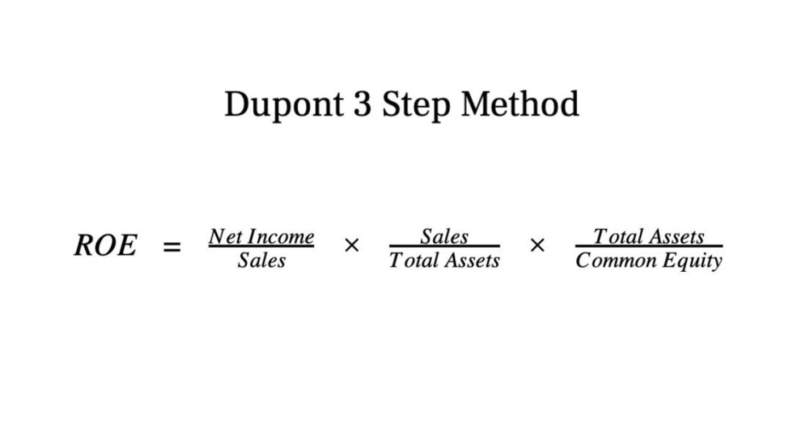Goods-receipt/invoice-receipt accounts can have either a credit or debit balance. The general ledger functions as a collective summary of transactions posted to subsidiary ledger accounts, such as cash, accounts payable, accounts receivable and inventory. Whereas, the income statement accounts like operating, non-operating income and expenses start afresh in every accounting period. That is, these accounts must have a NIL balance at the beginning of the accounting period. Thus, as per the above table, the credit sales figure of $200,000 would go into the accounts receivable control account. Whereas, the sales details of various debtors like Jack & Co., Mayers, and John can be found in the related subsidiary ledger.
Further, the Duality Principle is expressed in terms of the below accounting equation. For year-end reporting to the State Controller’s Office (SCO), agencies/departments must use the Level 1 legacy codes listed in the Uniform Codes Manual (UCM). Agencies/departments may expand the statewide uniform codes to lower-level accounts as necessary to accommodate agency/department-specific requirements.
Serving as a Central Repository for Accounting Data
In a computerized system, the general ledger will be an electronic file of all the needed accounts. This also facilitates the electronic preparation of the company’s financial statements. This template gives you everything you need to set up a simple, single-entry accounting system for your business. If your business is busy, and you find it hard to keep your books organized with this template, it may be time to consider double-entry bookkeeping.
The ending balances in these accounts are then aggregated and reported in the balance sheet and income statement. The totals calculated in the general ledger are then entered into other key financial reports, notably the balance sheet — sometimes called the statement of financial position. The balance sheet records assets and liabilities, as well as the income statement, which shows revenues and expenses.
These financial statements include the income statement and balance sheet. These accounts only contain summary balances that have been posted from subsidiary ledgers. This is done in order to minimize the transaction volume cluttering the general ledger. The accounts receivable and accounts payable accounts are the most likely to be control accounts. A general ledger account is an account or record used to sort, store and summarize a company’s transactions. These accounts are arranged in the general ledger (and in the chart of accounts) with the balance sheet accounts appearing first followed by the income statement accounts.
- Thus, various adjusting entries include entries for accrued expenses, accrued revenues, prepaid expenses, deferred revenues, and depreciation.
- The income statement might include totals from general ledger accounts for cash, inventory and accounts receivable, which is money owed to the business.
- Every business transaction is recorded twice—once as money leaving an account (a credit) and again as money entering an account (a debit).
- All other necessary accounting formats seek information from it,” he added.
This article will explore the different scenarios where switching to a GL might be worth it for you as a small business owner. FreshBooks offers smaller businesses a great way to manage their general ledger. FreshBooks currently offers four plan options, making it easy to transition to a more powerful plan. FreshBooks is designed for easy navigation, so even new users can easily find their way around. For a step-by-step introduction, see our (relatively painless) guide to double-entry accounting.
When a company borrows funds, the cash balance increases, and the debt (liability) balance increases by the same amount. Let’s dive into these ledgers to get a better understanding of what they are and why they’re so important to keeping your small business’s accounting in order. Revenue accounts in the general how to calculate gross income per month ledger are typically divided into categories, such as sales and interest. For example, sales may be further divided into retail sales and wholesale sales, or foreign sales and domestic sales. Accounts payable is the money a company owes to its suppliers and vendors for products and services purchased on credit.
Reasons Businesses Need a General Ledger
This is done by comparing balances appearing on the Ledger Accounts to the original documents like bank statements, invoices, credit card statements, purchase receipts, etc. Your General Ledger records transactions under different account heads. Thus, General Ledger Reconciliation helps you to ensure accuracy of the information contained in your General Ledger Accounts. Unlike Operating Expenses, the Non-Operating Incomes and Expenses are one-time incomes or expenses that you earn or incur.
Or you could use a more simple numbering system where each account is assigned a sequential number regardless of its type. Once you’ve decided on your numbering system, setting up your GL is simply a matter of entering the appropriate information into your accounting software. If you’re using manual ledgers, you’ll need to create ledger books for each account and enter the transactions into those ledgers. The set of 3-financial statements is the backbone of accounting, as discussed in our Accounting Fundamentals Course. A general journal records every business transaction in chronological order—it is the first point of entry into the company’s accounts.
What is General Ledger?
It’s an extremely valuable tool for any business, as it allows them to keep track of their finances in a simple and organized way. In this blog post, we’ll discuss what a GL Account is, how it works, and why it’s important for businesses to understand. We’ll also provide some examples and tips to help you get started with your own GL Account. A general ledger summarizes all the transactions entered through the double-entry bookkeeping method. Under this method, each transaction affects at least two accounts; one account is debited, while another is credited. The total debit amount must always be equal to the total credit amount.
An Income Statement Transaction Example
In accounting software, a general ledger sorts all transaction information through the accounts. Also, it is the primary source for generating the company’s trial balance and financial statements. The ledger’s accuracy is validated by a trial balance, which confirms that the sum of all debit accounts is equal to the sum of all credit accounts.
In other words, you record transactions under the individual General Ledger accounts to which such transactions relate. Further, these transactions are recorded based on the Duality Principle of Accounting. For example, say you purchase raw material from your vendor William Paper Mill throughout the year. Accordingly, all the cash or credit purchase transactions entered into with William Paper Mill would be recorded under the account of William Paper Mill.
A “chart of accounts” is a complete listing of every account in an accounting system. These sources help you to verify that the amounts recorded in the Ledger accounts are accurate. However, reconciling individual account balances becomes extremely easy with online accounting software like QuickBooks. Further, the Trial Balance ensures that the information contained in your Ledger Accounts is accurate.
For instance, your Purchase Ledger contains the following supplier details. Also, liabilities can be represented on the right-hand side of the balance sheet. So, liabilities can be further divided into current liabilities and non-current liabilities. Accordingly, you do not record details of each sales transaction undertaken with various customers in the Accounts Receivable Control Account. Here, a Subsidiary Ledger is a ledger recording detailed information of the related Control Account.
The general ledger is the second entry point for recording transactions after it enters the accounting system through the general journal. “General ledgers are maintained to make a balance sheet, file taxes and most importantly, view all your information in one place,” said Salman Rundhawa, founder and CEO of FilingTaxes. “A general ledger (GL) is a parent copy of all the financial transactions of a business. All other necessary accounting formats seek information from it,” he added. In contrast, the accounts that feed into the balance sheet are permanent accounts used to track the ongoing financial health of the business.
When it’s time to balance the books for financial statements, you will organize all the information in your journal entries into the general ledger accounts. The trick is making sure the balances in your credit column, and debit column are equal; that’s how you know you’ve nailed it. A company’s GL is the basis of its financial reporting and the source of the information used therein.
Furthermore, at the end of the accounting period, you close these Ledger Accounts. You do this as a result of balancing the debit and the credit sides of such accounts. Furthermore, the information recorded in General Ledger is divided based on the type of accounts.




